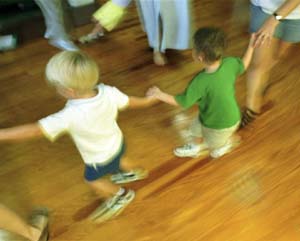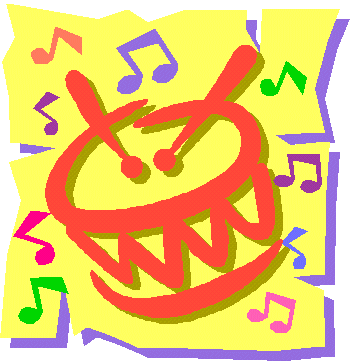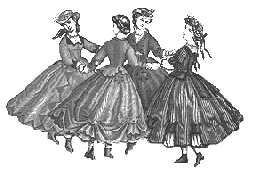

~~~ Elementary Music ~~~
An overview
(page still under construction -- check back soon!)




Our curriculum uses games, songs, and a great deal of enjoyable
silliness. Those fun activities are guided by a comprehensive method
that tells us what to teach, in what order to teach it, and why to teach
it.

Learning music is much like learning language. After listening and absorbing the sounds of the language around them, children begin to imitate. Even if their early attempts are nothing like speech, they receive praise for trying, and their imitations improve. Then they begin to think in the language. Next, children improvise in the language, making up their own phrases and sentences. After several years of constant exposure to language, developing their ability to think and speak, children are taught how to read and write. And only after all these skills are fluent do we get to grammar, the rules of sentence construction.
The sequence of our curriculum has much in common with language
development. Students learn to read notation, but only after
they have developed the abilities analogous to the ones listed above for
language. And we have a time constraint that children do not have when learning
language, since children do not have lifelong daily exposure to music with
the goal of learning to manipulate and understand it, as they have had with
language.

Like words, tonal and rhythm patterns, not single notes, are
the basic units of meaning in music. Students experience sound in a context,
and sounds are named and categorized in ways that relate to how they actually
sound.

Sometimes, to understand what something is, it helps to compare
it to what it is not. To better hear major tonality, for example, one
must also have experience with other tonalities such as minor, without
judgmental statements such as "major is happy, minor is sad." The two
most common building blocks of rhythm, grouping in twos (duple) or in
threes (triple), need to be experienced in many ways, and contrasted with
one another. Our curriculum does this, and much more, and puts these sounds
and sensations in context.

Rhythm must be felt in the body, through movement. So our movement games, besides being fun and active, are also teaching the body how beats and rhythms feel.

Application
During the primary years, we are busy using the
tiny amount of time we have to build skills and age-appropriate knowledge.
But we are also applying what we've learned. While we play our games, we
are practicing, applying and even testing (shhh --- don't tell the kids!)
our skills and knowledge, as well as teaching them. Students also put on
performances to apply what they have learned.
But the best application is to take these songs
and games home, to sing and play them together, and pass them on other family
members!
GRADE ONE - CLICK HERE FOR SOME FAVORITE
GAMES AND SONGS
GRADE TWO -- CLICK HERE FOR SOME FAVORITE GAMES AND SONGS
GRADE THREE -- CLICK HERE FOR
SOME FAVORITE GAMES AND SONGS
GRADE FOUR -- CLICK HERE FOR
SOME FAVORITE GAMES AND SONGS
Drawings and animation from www.grsites.com
All images on this site were used in good faith that they are
in the public domain. If a copyrighted image was used in error, please email
the webmaster at pleasant6@aol.com,
and the image will be removed.